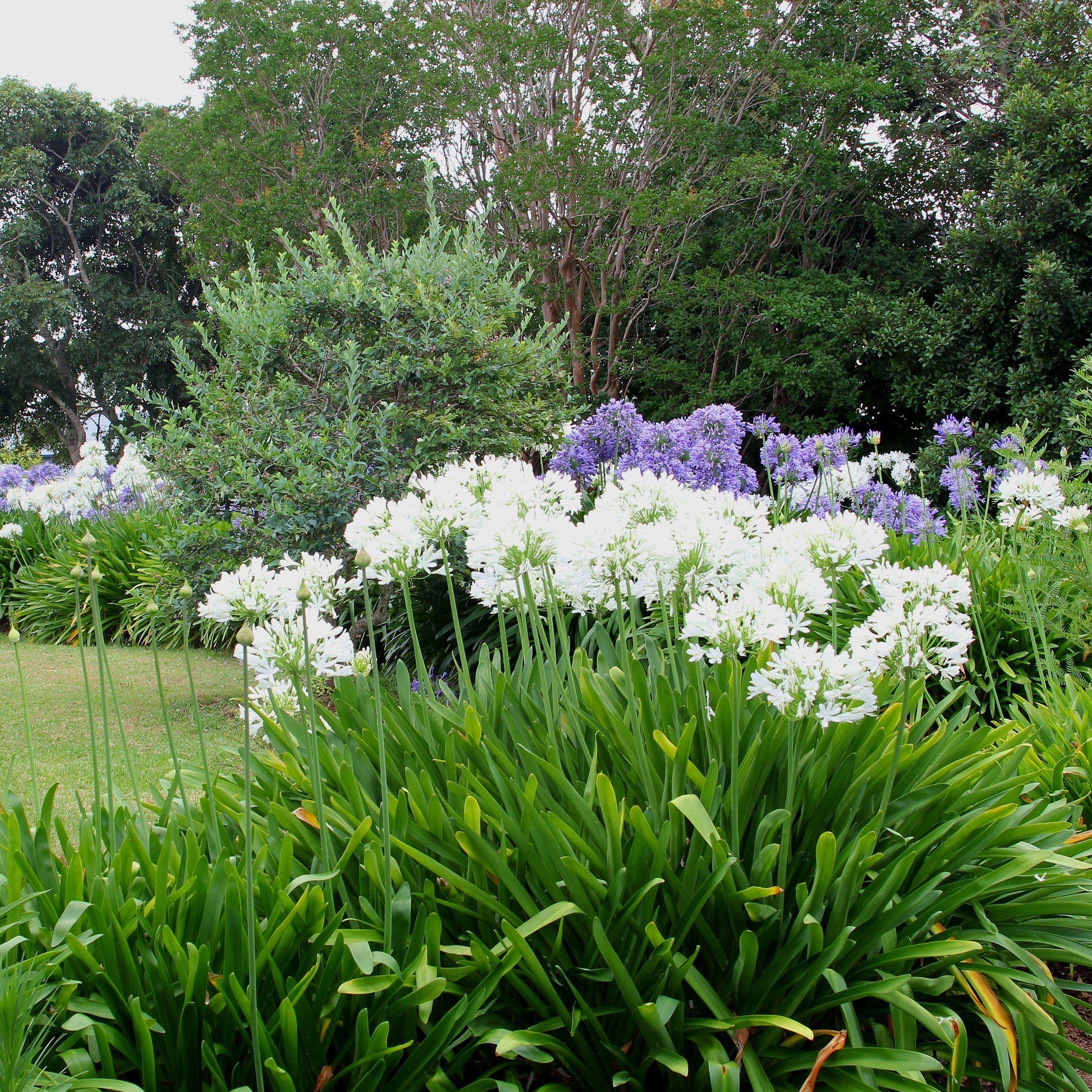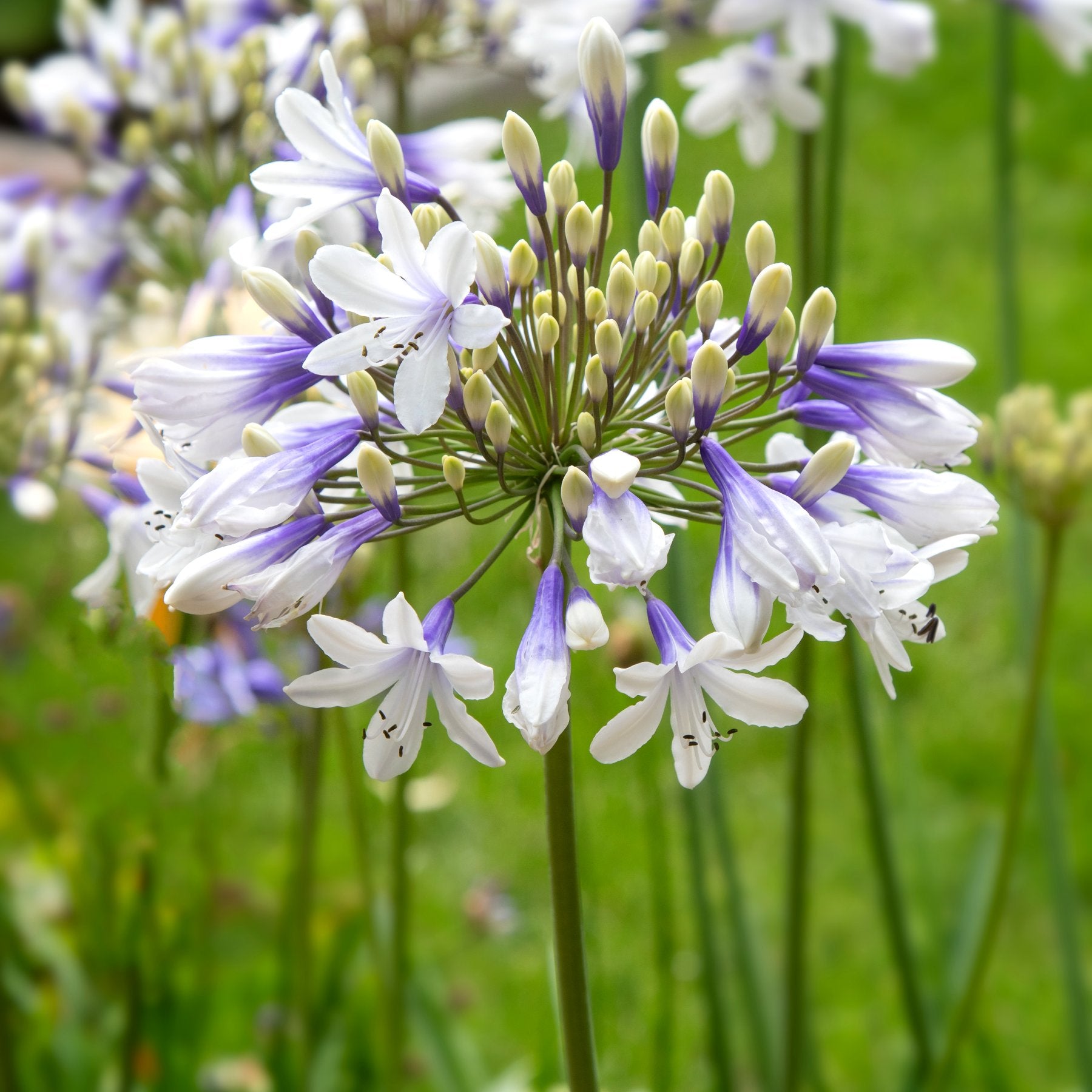Agapanthus Varieties: Selecting the most effective for Your Landscape
Agapanthus Varieties: Selecting the most effective for Your Landscape
Blog Article
Unleashing the Secret to Successful Agapanthus Cultivation: Advice for a Flourishing Yard
In the world of horticulture, growing agapanthus effectively calls for a strategic technique that encompasses different elements of plant treatment. By recognizing the subtleties of agapanthus growing, one can develop a setting where these plants thrive and bloom generously.
Planting Agapanthus: Ideal Practices
When growing Agapanthus, appropriate dirt preparation is crucial for making certain successful development and advancement of these beautiful blossoms. Agapanthus, commonly known as Lily of the Nile or African lily, flourishes in well-draining dirt with a slightly acidic to neutral pH degree - Agapanthus. Prior to planting, it is important to amend hefty clay dirts with raw material such as garden compost or peat moss to improve water drainage and supply essential nutrients for the plants
To grow Agapanthus, select a place that receives full sunlight to partial color, as this will promote healthy and balanced growth and plentiful blooming. Dig an opening twice the diameter of the plant's root ball and place the Agapanthus at the exact same depth it was previously expanding. Delicately backfill the hole with dirt, pushing down strongly to get rid of any kind of air pockets around the roots.
Water the recently grown Agapanthus completely and proceed to maintain the soil evenly wet, especially during the plant's energetic growing period. Agapanthus. Applying a well balanced plant food once a month can additionally sustain the plant's growth and flowering. By adhering to these ideal practices for planting Agapanthus, you can produce a stunning display of these captivating blossoms in your garden
Ideal Dirt Conditions for Agapanthus
For ideal growth and blooming success of Agapanthus plants, guaranteeing the soil problems are perfect is crucial. Agapanthus likes dirt that is rich in nutrients, so incorporating a well balanced plant food throughout the growing season can promote healthy and balanced development and dynamic blossoms.

Watering and Feeding Tips
To make sure healthy and balanced development and vibrant flowers, proper watering and feeding strategies are essential for effective Agapanthus growing. Agapanthus plants profit from regular watering, particularly throughout the growing period.
When it involves feeding Agapanthus, a balanced plant food with equivalent components nitrogen, phosphorus, and read this post here potassium can his response be applied in the spring to promote healthy development and flowering. Slow-release plant foods are optimal for supplying nutrients gradually over a prolonged period. Prevent over-fertilizing, as this can result in excessive vegetation growth at the expenditure of blooms.
Additionally, incorporating natural matter like garden compost into the soil can boost nutrient levels and improve dirt structure, aiding in the general health and wellness of the Agapanthus plants. By complying with these watering and feeding tips, gardeners can guarantee their Agapanthus plants prosper and produce magnificent display screens of blossoms.
Trimming and Deadheading Techniques
Proper trimming and deadheading methods play a vital duty in keeping the health and wellness and aesthetic appeals of Agapanthus plants, complementing the important methods of watering and fertilizing for effective growing. Pruning Agapanthus includes getting rid of invested flower heads, yellowing or dead fallen leaves, and general shaping of the plant to advertise much better development. Deadheading, the procedure of removing faded blossoms, not just improves the plant's appearance however likewise motivates more growing.
When deadheading Agapanthus, it is recommended to snip off the flower stem at the base making use of sharp, tidy shears. This process redirects the plant's energy from seed manufacturing back into root and foliage growth, promoting a healthier and extra durable plant. Regular deadheading can prolong the flowering duration of Agapanthus and stop self-seeding, which can cause overcrowding.
In terms of trimming, Agapanthus normally gain from a light trim after blooming to tidy up the plant and urge fresh growth. Reducing the invested blossom stems and removing any type of dead or damaged foliage helps maintain the plant's vitality and total appearance. Nonetheless, it is vital to prevent cutting right into the crown of the plant, as this can damage its health and wellness.

Protecting Agapanthus From Pests and Diseases
Applying efficient bug and illness monitoring methods is important to safeguarding the wellness and vigor of Agapanthus plants in farming. One usual insect that affects Agapanthus is the Agapanthus borer, a try this caterpillar that tunnels into the plant, creating damages to the flowers and fallen leaves.
In enhancement to insects, Agapanthus are susceptible to conditions such as root rot and fungal fallen leave spots. These issues can usually be protected against by guaranteeing appropriate drain and preventing overwatering. Affected parts of the plant should be immediately gotten rid of to protect against more spread if indicators of disease appear. Fungicides may likewise be made use of as a treatment step, following the manufacturer's directions meticulously. By staying vigilant and resolving parasite and condition problems quickly, gardeners can help their Agapanthus prosper and grow.

Final Thought
Finally, effective farming of agapanthus needs appropriate planting strategies, optimal soil conditions, appropriate watering and fertilizing, regular pruning and deadheading, and defense from diseases and parasites. By following these pointers and tricks, gardeners can guarantee a flourishing garden filled up with beautiful agapanthus blossoms. Agapanthus. Bear in mind to preserve constant care and interest to detail to advertise the wellness and durability of these spectacular plants
When growing Agapanthus, correct soil prep work is crucial for ensuring effective development and development of these gorgeous blossoms.Water the recently planted Agapanthus completely and continue to maintain the dirt uniformly wet, specifically throughout the plant's energetic growing period.For ideal growth and flowering success of Agapanthus plants, making certain the dirt problems are excellent is important. When planting or transplanting Agapanthus, make certain the soil is well-prepared to provide the essential structure for the plants to establish themselves effectively. One common pest that influences Agapanthus is the Agapanthus borer, a caterpillar that tunnels right into the plant, creating damages to the flowers and leaves.
Report this page